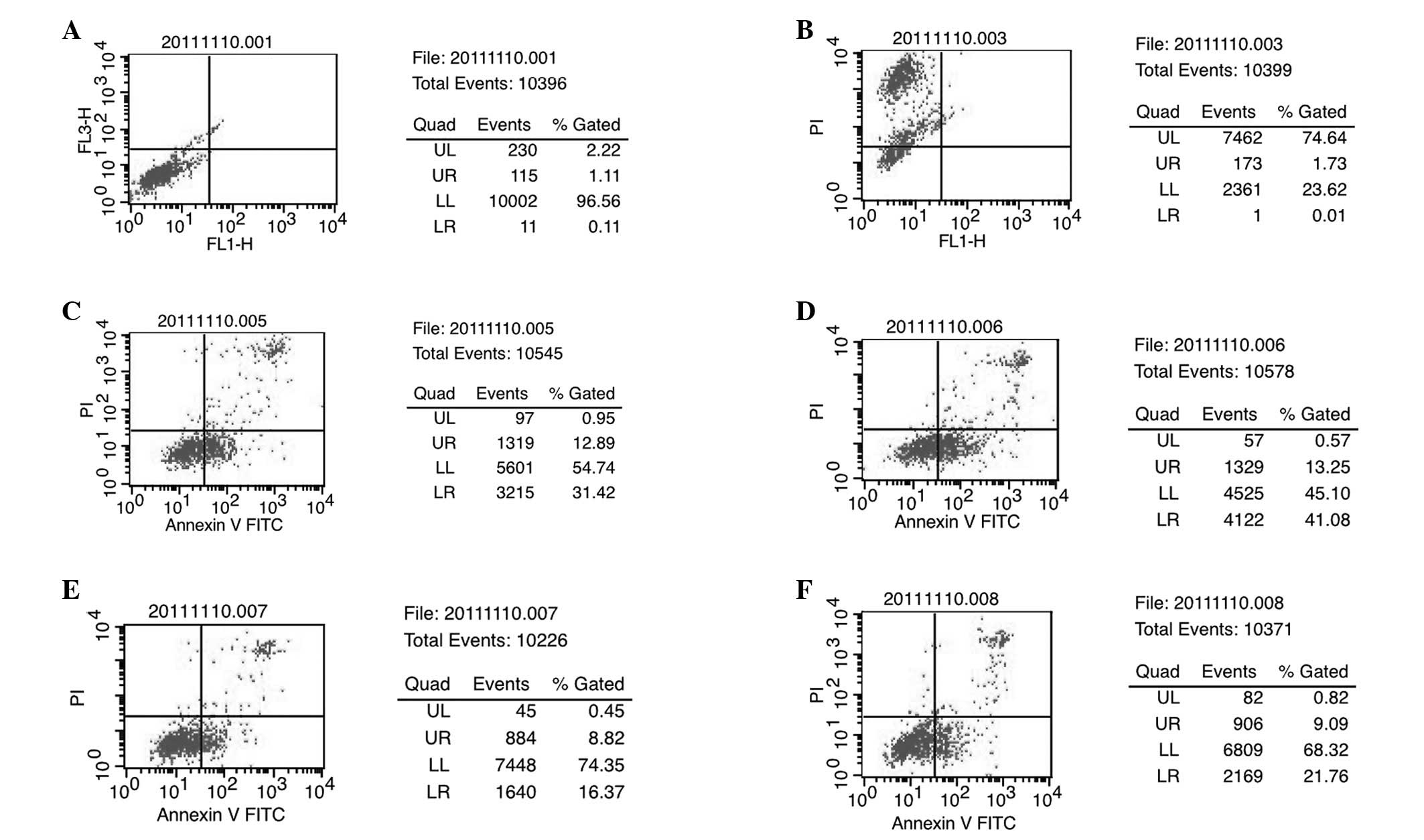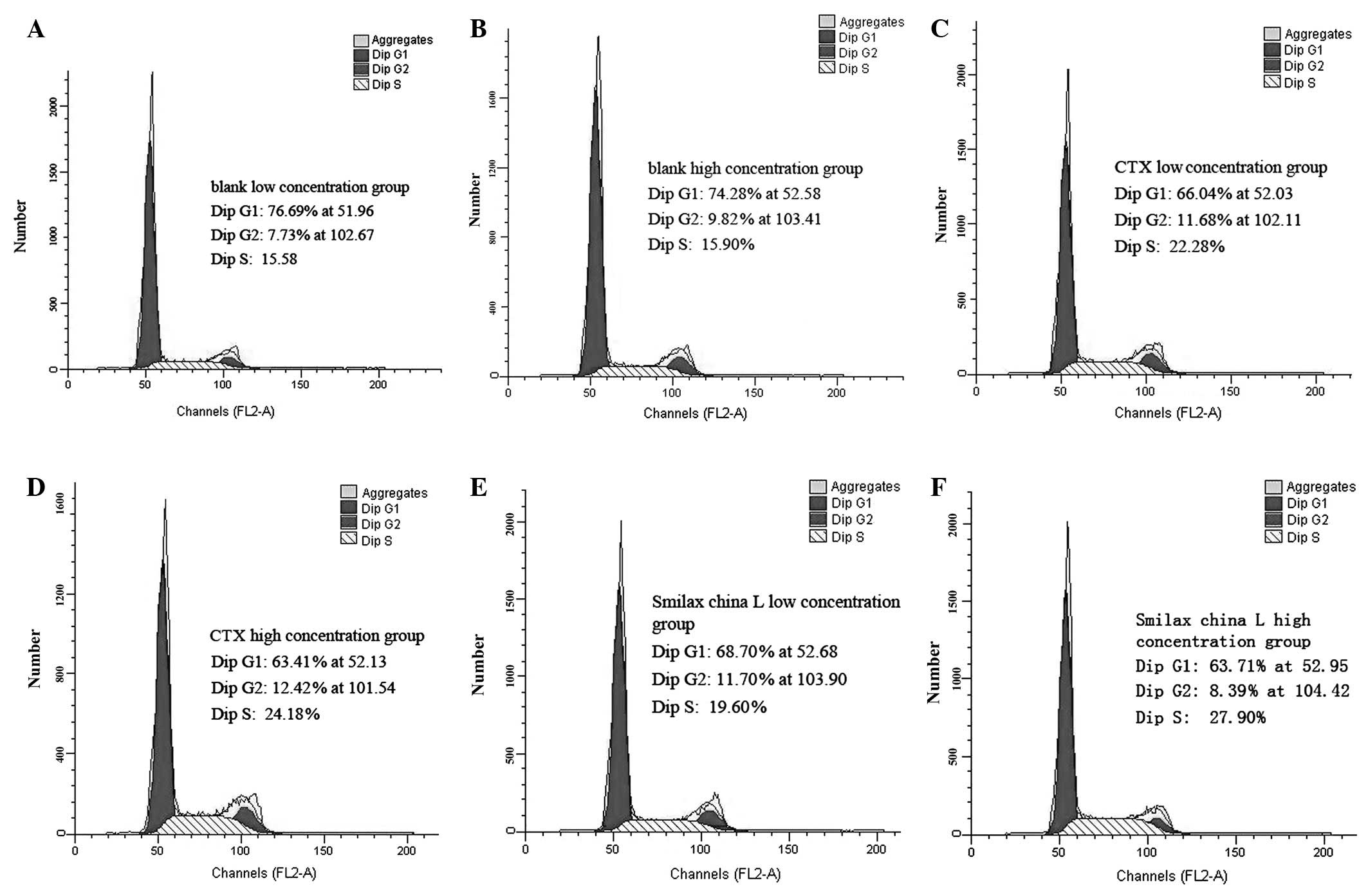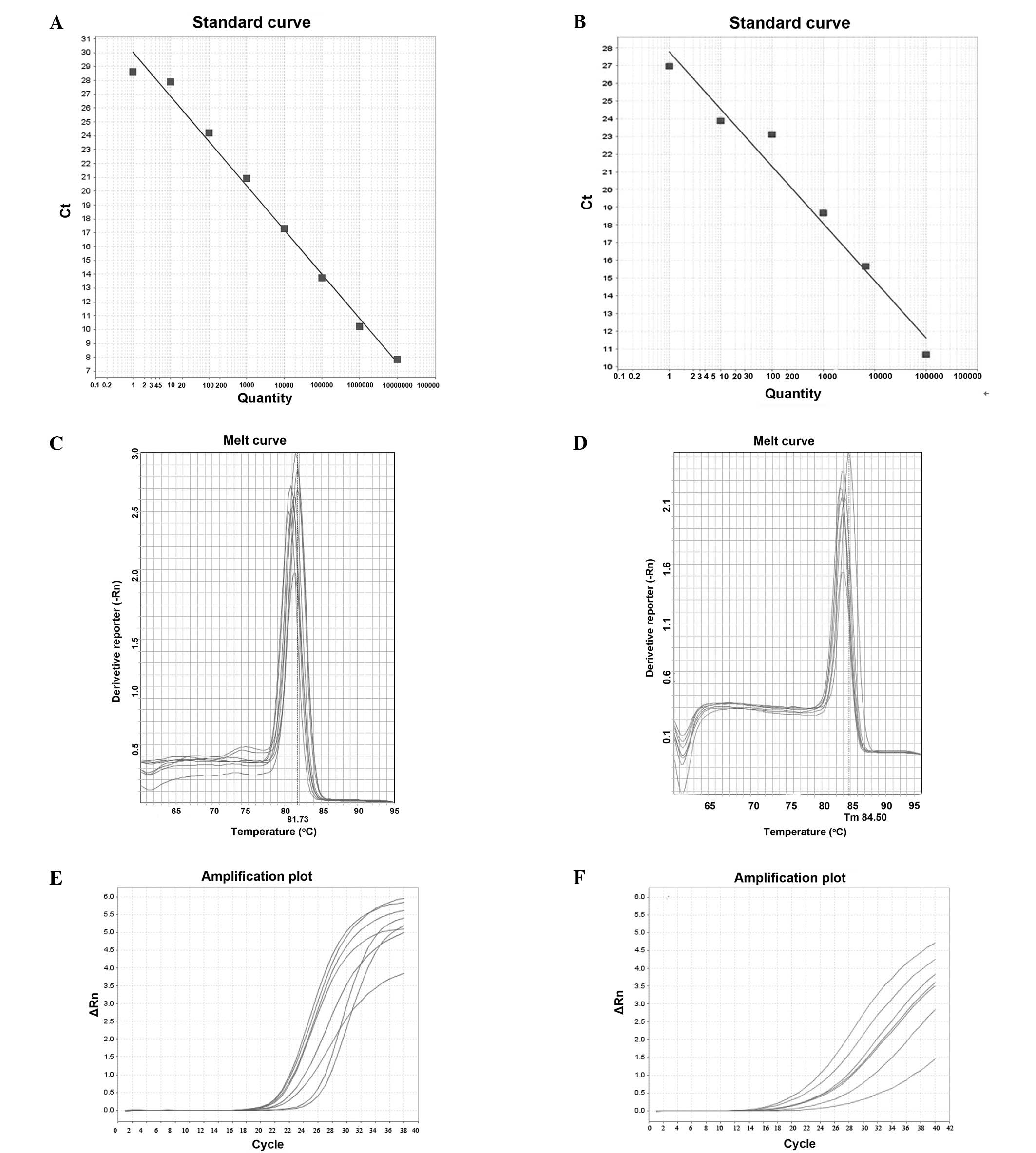|
1.
|
Liang QC and Zhong M: China Zhuang
nationality medicine. Guangxi Nationalities Publishing House;
Nanning: pp. 2262005
|
|
2.
|
Wei JY, Li Y, Wei T, et al: Drug screening
study of 50 kinds of Chinese herbal and zhuang nationality medicine
in guangxi. J Guangxi Traditional Chinese Med Univ. 4:3–7. 2003.(In
Chinese).
|
|
3.
|
Xu Y, Wang HY, Jiang JY, et al: Studies on
steroidal saponins from Smilax china and their cytotoxic
activities. Chinese J Experimental Traditional Med Formulae.
11:92–96. 2011.(In Chinese).
|
|
4.
|
Jiang LY and Liu YM: Study on the
relationship between structures and anti-tumor activity of
flavonoids compounds. Computers and Applied Chemistry. 4:21–24.
2005.
|
|
5.
|
Kohn K W, Aladjem MI, Weinstein JN and
Pommier Y: Chromatin challenges during DNA replication: a systems
representation. Mol Biol Cell. 19:1–7. 2008.PubMed/NCBI
|
|
6.
|
Zhang K and Ma SL: Progress on anticancer
molecule mechanism of naturally occurring drugs. China Journal of
Traditional Chinese Medicine and Pharmacy. 10:2344–2347. 2011.(In
Chinese).
|
|
7.
|
Lepley DM, Li B, Birt DF and Pelling JC:
The chemopreventive flavonoid apigenin induces G2/M arrest in
keratinocytes. Carcinogenesis. 17:2367–2375. 1996. View Article : Google Scholar : PubMed/NCBI
|
|
8.
|
Ou XH, Liao LF, Liu HG and Xu H:
Significance of POLD1 expression in primary hepatocellular
carcinoma. World Chin J Digestology. 19:151–155. 2011.(In
Chinese).
|
|
9.
|
Yan YQ: The Ideas and Methods of Modern
Research of Traditional Chinese Medicine. Chemical Industry Press;
Beijing: pp. 340–341. 2006
|
|
10.
|
Li F, Li SL and Yin YG: Construction of
NK4 recombinant lentiviral vector and its expression in HCCLM3
cells. J Chin Med Univ. 40:1081–1084. 2011.(In Chinese).
|
|
11.
|
Zhao YQ and Zhe ZF: Advances in gene
Treatment of Primary hepatic carcinoma. Disease Monitor and
Control. 8:482–484. 2011.(In Chinese).
|
|
12.
|
Lin XY, Zhang SR and Xu H: Advances of
Eukaryotic DNA polymerase δ. Progress in Natural Science. 1:3–9.
2005.(In Chinese).
|
|
13.
|
Ruan XL, Li YL and Wu Q: P21 suppresses
cell proliferation and downregulates POLD1 expression in human
gastric cancer cell line MGC-803. World Chin J Digestology.
19:1990–1995. 2011.(In Chinese).
|
|
14.
|
Liao ZJ, Zhang XM, Guo YH and Sun HF:
Study on the effect of proliferation and apoptosis of
sarsasapogenin to human gastric cancer line BGC-823. Modern
Oncology. 18:1085–1087. 2010.(In Chinese).
|
|
15.
|
Huang CH, Lu Y, Gao XJ, et al: Advances of
serum pharmacology of Chinese medicine. Chin J Exp Trad Med
Formulae. 17:266–271. 2011.(In Chinese).
|
|
16.
|
10 kinds of Zhuang medicine-containing
serum against human hepatocellular carcinoma cells’ effect and the
study of Jingangteng-containing serum affect the tumor suppressor
gene WWOX’s expression. Dissertation of Guangxi Med Univ.
14:2012.(In Chinese).
|
|
17.
|
Chinese Pharmacopoeia Commission:
Pharmacopoeia of People’s Republic of China. Beijing Chemical
Industry Press; pp. 2162005
|
|
18.
|
Zeng XX and Chen XL: Advances of
traditional application and modern research of Smilax china
L. Chinese Traditional and Herbal Drugs. 6:952–954. 2008.
|
|
19.
|
Wang XJ: Phenolic constituents from
Smilax china L and their antitumor activities. Dissertation
of Nanjing University of Science & Technology. 23:2009.(In
Chinese).
|
|
20.
|
Li Y, Yao LB, Wang LF, et al: Inducing
effect of resveratrol on anoikis of gastric cancer cells. Chinese
Traditional and Herbal Drugs. 10:64–66. 2004.
|
|
21.
|
Luo Q, Song GB, Qin J, et al: Progress of
research on hepato-cellular carcinoma cells apoptosis induced by
Chinese traditional medicine. Journal of Chongqing Univ. 7:115–117.
2005.
|
|
22.
|
Li GC, Dong KL and Hu CH: Effect of
compound Rhizoma Smilacinus granules on the expression of Bcl-2 and
Bax gene in A549 cell lines of non-small cell lung cancers. Zhong
Nan Da Xue Xue Bao Yi Xue Ban. 32:312–315. 2007.(In Chinese).
|
|
23.
|
Xu W: Anti-proliferative effect on tumor
cells of kaempferol-7-O-β-D-glucoside isolated from Smilax
china L. Rhizome. Dissertation of East China University of
Science and Technology. 42:2008.(In Chinese).
|
|
24.
|
Sanefuji K, Taketomi A, Iguchi T, et al:
Significance of DNA polymerase delta catalytic subunit p125 induced
by mutant p53 in the invasive potential of human hepatocellular
carcinoma. Oncology. 79:229–237. 2010. View Article : Google Scholar : PubMed/NCBI
|
|
25.
|
Xiaoyan L, Shuren Z and Heng X: Eukaryotic
DNA polymerase δ research present situation. J Prog Nat Sci.
17:716–723. 2007.
|
|
26.
|
Hansen K, Farkas T, Lukas J, et al:
Phosphorylation-dependent and -independent functions of p130
cooperate to evoke a sustained G1 block. EMBO J. 20:422–432. 2001.
View Article : Google Scholar : PubMed/NCBI
|
|
27.
|
Song N, Zhu X, Shi L, et al:
Identification and functional analysis of a CDE/CHR element in the
POLD1 promoter. Sci China C Life Sci. 52:551–559. 2009. View Article : Google Scholar : PubMed/NCBI
|

















